
The Douglas C-47 Skytrain or Dakota is a military transport aircraft developed from the civilian Douglas DC-3 airliner. It was used extensively by the Allies during World War II. During the war the C-47 was used for troop transport, cargo, paratrooper, for towing gliders and military cargo parachute drops. The C-47 remained in front-line service with various military operators for many years. It was produced in approximately triple the numbers as the larger, much heavier payload Curtiss C-46 Commando, which filled a similar role for the U.S. military.

The Fairchild C-123 Provider is an American military transport aircraft designed by Chase Aircraft and built by Fairchild Aircraft for the U.S. Air Force. In addition to its USAF service, which included later service with the Air Force Reserve and the Air National Guard, it went on to serve the U.S. Coast Guard and various air forces in Southeast Asia. During the War in Vietnam, the C-123 was used to deliver supplies, to evacuate the wounded, for agent insertions behind enemy lines, and was also used to spray Agent Orange.
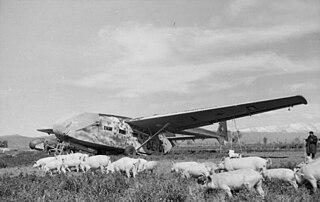
The Gotha Go 242 was a transport glider used by the Luftwaffe during World War II. It was an upgrade over the DFS 230 in both cargo/troop capacity and flight characteristics. It saw limited combat action. There were multiple glider variants, and it became the basis for a transport aircraft, the: Gotha Go 244.

The Boeing C-108 Flying Fortress was an American transport aircraft used during World War II. Four were converted from B-17 Flying Fortress heavy bombers.
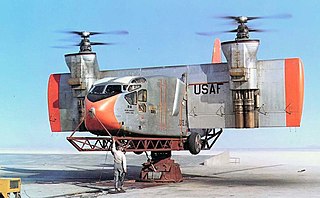
The Hiller X-18 was an experimental cargo transport aircraft designed to be the first testbed for tiltwing and V/STOL technology.

The Chase Aircraft Company, founded in 1943, was an American aircraft manufacturer, primarily constructing assault gliders and military transport aircraft. Lacking space for expansion, the company was purchased by Henry J. Kaiser in 1951. Plans to produce the C-123 transport for the United States Air Force collapsed amid scandal, and the company closed in 1953. A successor company, Stroukoff Aircraft, continued experimental work for several years before closing in 1959.

The Stroukoff YC-134, designed in 1956, was based heavily on the Fairchild C-123 Provider, itself designed by Michael Stroukoff. The United States military contracted with Stroukoff Aircraft Corporation to develop an improved version of the aircraft, combining features that the company had developed for the YC-123D and YC-123E.
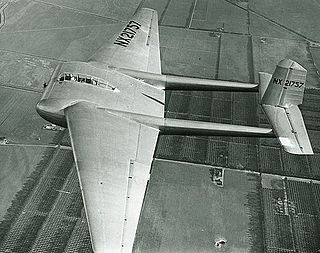
The XCG-16 was a military transport/assault glider ordered by the United States Army Air Forces (USAAF), from General Airborne Transport Co., for competition against the Waco CG-13A at Wright Field. The XCG-16’s preferred tow aircraft was the Lockheed Model 18 Lodestar.

The Aerotec A-122 Uirapuru was a Brazilian military trainer aircraft. It was a low-wing monoplane with tricycle undercarriage that accommodated the pilot and instructor side-by-side. It first flew on 2 June 1965.

The Gribovsky G-11 was a Soviet light troop/cargo military glider of World War II.
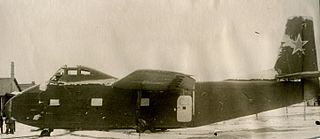
The Yakovlev Yak-14 was the largest assault glider ever to enter service with the Soviet Air Force. It was introduced in 1949, at a time when other air forces were abandoning the glider concept. In 1950 a Yak-14 became the first glider to fly over the North Pole.
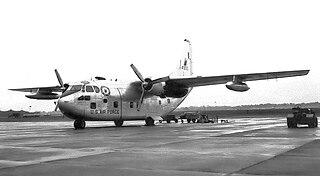
The 309th Maintenance Wing is an inactive wing of the United States Air Force last based at Hill Air Force Base, Utah. On July 12, 2012 it was inactivated and its function became part of the Ogden Air Logistics Complex.
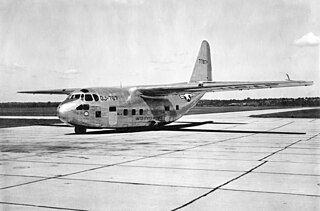
The Chase XCG-20, also known as the XG-20 and by the company designation MS-8 Avitruc, was a large assault glider developed immediately after World War II by the Chase Aircraft Company for the United States Air Force, and was the largest glider ever built in the United States. The XG-20 did not see production due to a change in USAF requirements, however, it was modified into the successful Fairchild C-123 Provider twin-engined transport aircraft which saw extensive service in the Vietnam War.

The Douglas XCG-17 was an American assault glider, developed by the conversion of a C-47 Skytrain twin-engine transport during World War II. Although the XCG-17 was successfully tested, the requirement for such a large glider had passed, and no further examples of the type were built; one additional C-47, however, was converted in the field to glider configuration briefly during 1946 for evaluation, but was quickly reconverted to powered configuration.

The Chase XC-123A was an experimental transport aircraft developed by Chase Aircraft. The first jet-powered transport built for the United States Air Force, it was intended for use as a high-speed transport for high-priority cargo and personnel. The XC-123A was determined to have insufficient advantages over existing types in service, and did not go into production. The sole prototype was converted into the piston-powered Stroukoff YC-123D to evaluate boundary layer control systems.

Michael Stroukoff was a Russian White Guard soldier and an American architect and aircraft designer. He served in the White Army during the Russian Revolution before emigrating to the United States in 1922. After spending some time as an architect, he joined the Chase Aircraft Company and designed a number of transport aircraft for the United States Army Air Forces and the United States Air Force, later starting his own company to perform further aeronautical work.
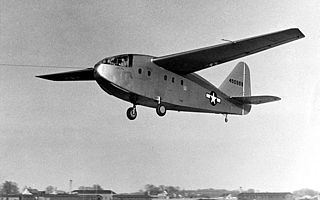
The Chase CG-14, also known as the G-14 or Model MS.1, was an assault glider manufactured by Chase Aircraft for the United States Army Air Forces during the Second World War. The aircraft failed to progress beyond the prototype stage, being overtaken by larger, improved glider designs.
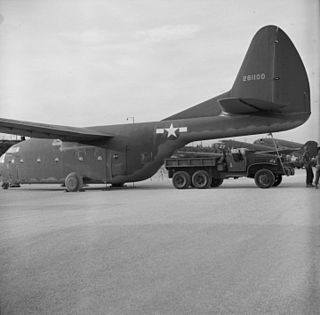
The Laister-Kauffman CG-10 was an American military transport glider aircraft developed during World War II.
The Douglas CG-19 was a late 1940s assault glider project conceived by the Douglas Aircraft Company.





















